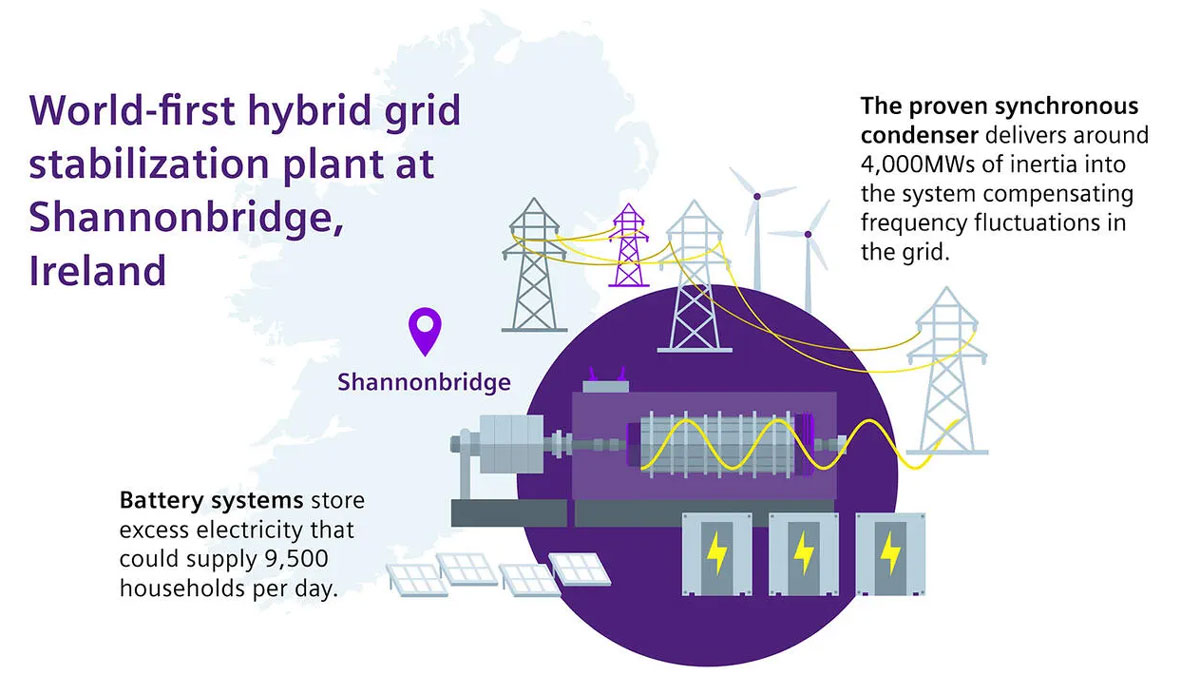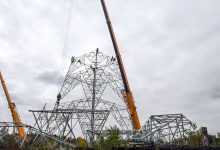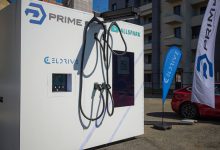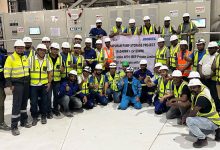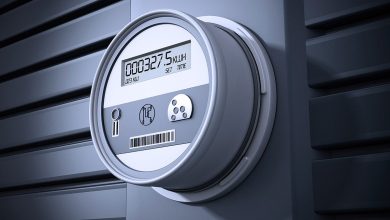Siemens Energy Combines 2 Technologies to Stabilize the Irish Grid
Siemens Energy will deliver the first-ever hybrid grid stabilization and large-scale battery storage plant at Shannonbridge in Ireland. This is the first time, these two technologies have been combined into one, single grid connection to stabilize the grid and make better use of renewable energy.
Green energy for 9500 households
The proven synchronous condenser technology uses a generator with a flywheel connected. It’s essentially a big ‘rotating mass’ and with its stored energy, the synchronous condenser provides power reserve, which instantly compensates for frequency fluctuations and strengthens the stability of the grid.
At the same time, a large-scale battery energy storage system can store or release excess renewable energy when it is needed. It provides a solution to maximize use of renewable energy, even when the wind is not blowing and with a capacity of around 160MWh the battery energy storage could supply around 9500 households with power for a full day.
“Innovative technical solutions are essential if we are to combat the consequences of climate change and transition to a net-zero grid. Battery storage systems will play an increasingly pivotal role in tomorrow’s global energy infrastructure,” said Tim Holt, member of the Managing Board of Siemens Energy. “By combining our proven experience in grid technology and our ability to innovate, the Shannonbridge hybrid solution will help ramp-up renewables by offering storage and stabilization technology in one connection.”
Siemens Energy’s scope includes the synchronous condenser, including the flywheel which will deliver around 4000 MWs of inertia onto the system, and the large-scale battery energy storage system with around 160 MWh as well as power conversion systems, energy management system and medium voltage equipment. The order will generate around 85m Euros for Siemens Energy and work has already begun on site.
A small island with big ambitions
Achieving Ireland’s climate targets will require massive investment in energy infrastructure. By combining two innovative energy solutions via one connection, Siemens Energy will deliver a flexible system to help stabilize Ireland’s grid.
Ireland aims to reach net-zero by 2050 and to reduce emissions by 51% by the end of the decade, so is significantly increasing use of renewable energy. In addition to carbon emission reduction targets, the country is also experiencing significantly growing electricity demand, in part due to its global digital and data hosting industry.
Flexibility on offer
The current market mechanism in Ireland allows operators to sell services like inertia, short circuit power and reactive power as provided by the synchronous condenser technology to the transmission system operator. To support this, Siemens Energy will also provide an energy management system allowing the customer to respond to market demands and power needs in real-time.
The infographic for the world’s first hybrid grid stabilization facility at Shannonbridge in Ireland shows icons of electricity pylons, wind turbines, a storage battery, photovoltaic arrays, and a synchronous condenser on a map of Ireland. With a capacity of about 160MWh, the battery storage could power about 9500 homes for an entire day. The synchronous capacitor provides about 4000MW of inertia to the system, compensating frequency fluctuations in the grid.


